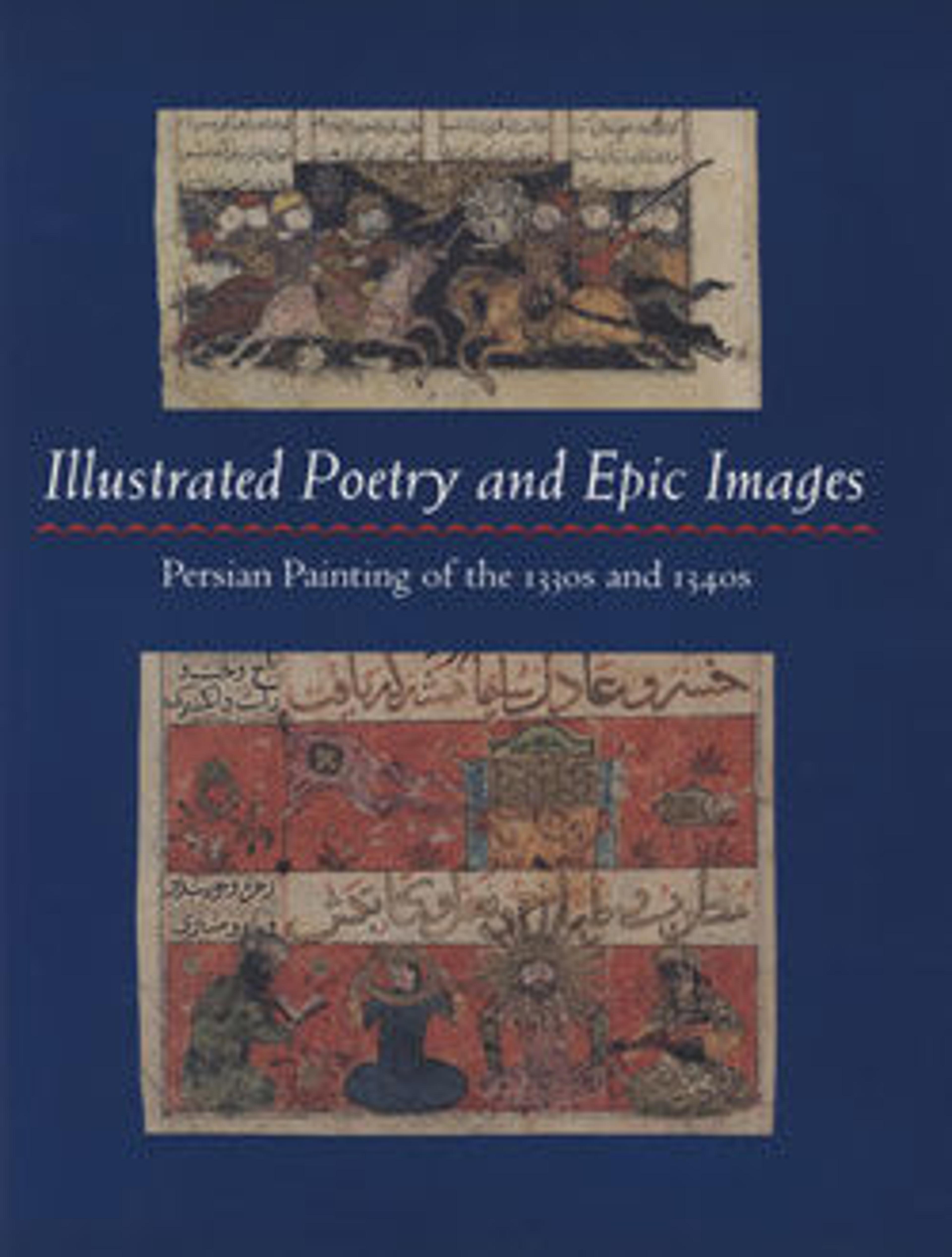"The First Combat of Gav and Talhand", Folio from a Shahnama (Book of Kings)
Three battles between two Indian princes - half brothers contending for the throne - resulted in the invention of the game of chess, to explain the death of one of them to their grieving mother. The Persian word shah mat, or checkmate, indicating a position of no escape, describes the plight of Talhand at the end of the third battle. Gav will not kill his brother, who dies nonetheless upon his war elephant, exhausted by the battle and seeing no escape. The half-clad figures seated on the backs of the elephants are Indian mahouts; mounted archers and other warriors can be seen against the red background.
Artwork Details
- Title: "The First Combat of Gav and Talhand", Folio from a Shahnama (Book of Kings)
- Author: Abu'l Qasim Firdausi (Iranian, Paj ca. 940/41–1020 Tus)
- Date: ca. 1330–40
- Geography: Attributed to Iran, probably Isfahan
- Medium: Ink, opaque watercolor, gold, and silver on paper
- Dimensions: Page:
H. 8 1/16 in. (20.5 cm)
W. 5 1/4 in. (13.3 cm)
Painting:
H. 2 3/16 in. (5.6 cm)
W. 4 5/16 in. (11 cm) - Classification: Codices
- Credit Line: Bequest of Monroe C. Gutman, 1974
- Object Number: 1974.290.40
- Curatorial Department: Islamic Art
More Artwork
Research Resources
The Met provides unparalleled resources for research and welcomes an international community of students and scholars. The Met's Open Access API is where creators and researchers can connect to the The Met collection. Open Access data and public domain images are available for unrestricted commercial and noncommercial use without permission or fee.
To request images under copyright and other restrictions, please use this Image Request form.
Feedback
We continue to research and examine historical and cultural context for objects in The Met collection. If you have comments or questions about this object record, please contact us using the form below. The Museum looks forward to receiving your comments.
